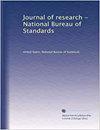A comparison of several developers and the specification of relative sensitivity
引用次数: 1
Abstract
In a study of several photographic developers, including the international sensitometric standard, p-aminophenol, it was found that the latter agent is not as satisfactory as certain metol-hydroquinone developers in two respects: (1) The "toe" region of the characteristic curve is increased, accompanied by an increased inertia; and (2) the recommended formula is not well chosen in that the solution is supersaturated. It is also found that the presence of soluble bromide in some developers gives, with some emulsions at least, an increased sensitivity with prolonged development. This effect should prove useful in those cases where high contrast is not detrimental. It was observed that, in general, the ratio of values of the two sensitivity indices varied considerably with development time. In fact, under certain conditions, values of one index {IIi) may be decreasing while values of the other 0-1Em) are increasing with development time. In order to consider these apparently contradictory changes a definition for relative sensitivity has been set up. From this definition it follows that comparisons of sensitivity may be made only when the emulsions have each received equivalent development. The type of emulsion with which each of these indices is particularly applicable is also indicated. The findings of Luther, that the gradient of the curve above the inertia point is approximately one half y, are confirmed. The application of this constant to coordinate the inertia and gradient methods of specifying sensitivity is discussed. This information should help clear up the confusion surrounding the measurement of the sensitivity of photographic emulsions. CONTENTS Page几种显影剂的比较及相对灵敏度的说明
在对几种照相显影剂,包括国际感光标准对氨基酚的研究中,发现后者在两个方面不如某些甲醇对苯二酚显影剂令人满意:(1)特征曲线的“脚趾”区域增加,伴随着惯性增加;(2)溶液过饱和,推荐配方选择不当。还发现,溶性溴化物在某些显影剂中的存在,至少对某些乳剂来说,随着显影剂显影时间的延长,灵敏度会增加。这种效果在高对比度并不有害的情况下是有用的。观察到,一般来说,两个灵敏度指数值的比值随发育时间变化很大。事实上,在一定条件下,随着开发时间的推移,一个指标{IIi)的值可能在减小,而另一个指标(0-1Em)的值可能在增大。为了考虑这些明显矛盾的变化,建立了一个相对灵敏度的定义。从这一定义可以得出,只有当两种乳剂的显光度相等时,才能进行灵敏度的比较。还指出了每种指标特别适用的乳液类型。路德的发现,即曲线在惯性点上方的梯度约为1 / 2 y,得到了证实。讨论了用该常数来协调惯性法和梯度法确定灵敏度的方法。这些信息应该有助于澄清围绕感光乳剂灵敏度测量的困惑。内容页面
本文章由计算机程序翻译,如有差异,请以英文原文为准。
求助全文
约1分钟内获得全文
求助全文

 求助内容:
求助内容: 应助结果提醒方式:
应助结果提醒方式:


